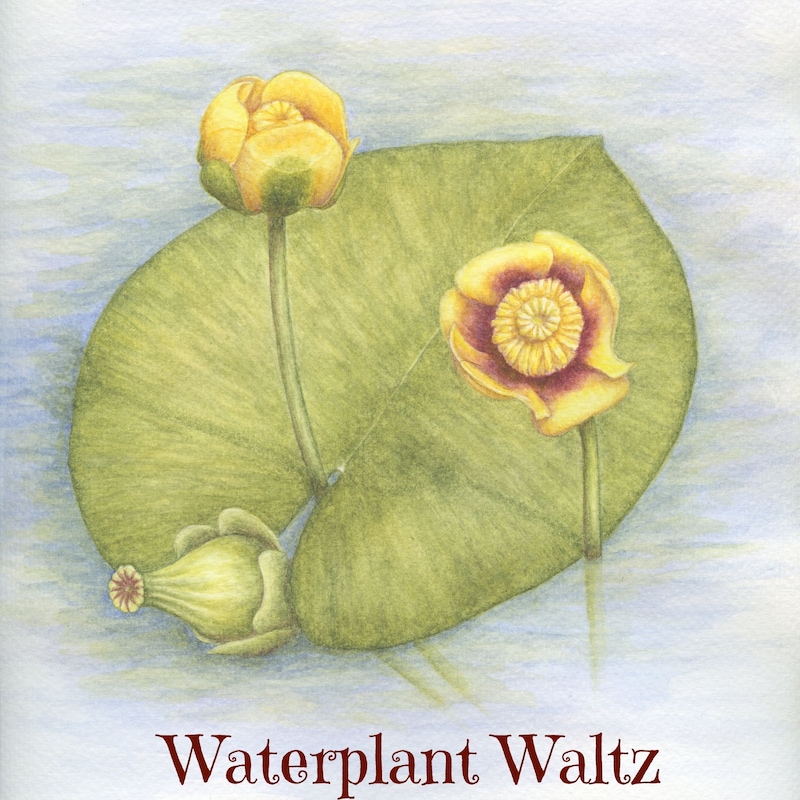Carmen:
Welcome to Song Plants.
2
:
My name is Carmen Porter.
3
:
I wanted to do an episode about
wetland classification, but found
4
:
that it is heavily complicated by
legal and regional specifications.
5
:
There are multiple official classification
systems in use, and they differ
6
:
enough that I've chosen not to expand
upon their multitude of variations.
7
:
Instead, I will define some common
terms and give a basic overview.
8
:
It can be useful when foraging,
hunting, or even just exploring
9
:
to be able to recognize and name
different types of wetlands.
10
:
Each provides a unique environment
hosting flora and fauna
11
:
adapted to their conditions.
12
:
According to Merriam Webster, a bog is
"a poorly drained, usually acid area,
13
:
rich in accumulated plant material."
14
:
Bogs are often peatlands.
15
:
The peat forms as the sphagnum
mosses grow and die, forming a
16
:
dense mat of soggy organic material.
17
:
The growth exceeds the rate of
decomposition, leaving the growing
18
:
substrate nutrient deprived.
19
:
The main water source is precipitation.
20
:
Certain plants, like honeydews (Drosera
spp.) and pitcher plants (Sarracenia
21
:
spp.), have adapted to this environment
by attracting and digesting insects.
22
:
Others, like black spruce (Picea
mariana), tolerate the conditions,
23
:
but have their growth stunted.
24
:
Bog cranberries (Vaccinium spp.), Labrador
tea (Rhododendron groenlandicum) and
25
:
cottongrass ( Eriophorum spp.) are
all examples of plants that developed
26
:
a preference for the damp acidity.
27
:
Seasonal water may or may not
appear on the surface, but the
28
:
ground is always saturated.
29
:
Fens are defined by Merriam Webster
as being "low land that is covered
30
:
wholly or partly with water and that
usually has peaty alkaline soil."
31
:
Fens differ from bogs in that they are fed
by multiple water sources, hence are more
32
:
mineral rich and are often less acidic.
33
:
Fens can be peatlands, but
due to the mineralization,
34
:
more diverse flora can thrive.
35
:
Though many bog species may be present,
others such as tamarack (Larix laricinia),
36
:
willows (Salix spp.), shrub birches
(Betula spp.), boreal orchid, if you're
37
:
lucky, (Platanthera dilatata), and
sedges (Carix spp.), thrive in fens.
38
:
Tree growth tends to be less stunted.
39
:
Merriam Webster describes marshes
as being "a track of soft, wet land
40
:
usually characterized by monocotyledons,
(such as grasses or cattails)".
41
:
Marshes are fed by multiple water
sources, allowing mineralization.
42
:
The rate at which plant material
decomposes often exceeds that of growth.
43
:
Therefore, an abundance of
available nutrients is released.
44
:
Water level is at or above
the ground surface, but can
45
:
vary throughout the season.
46
:
They can be brackish, but both slightly
salty and freshwater marshes are
47
:
dominated by grasses (Poaceae), sedges
(Cyperaceae), and rushes (Juncaceae).
48
:
A diversity of regional herbaceous species
thrive, but trees tend to be absent.
49
:
Swamps tend to flood seasonally,
but the water table remains at
50
:
or close to the surface all year.
51
:
They're often the overflow for
a river or other body of water.
52
:
Their soil is usually mineral rich with
an abundance of available nutrients.
53
:
Flood tolerant and water loving
trees and shrubs dominate.
54
:
Some familiar species like black
spruce, tamarack, birch, and
55
:
willow can be present but grow much
larger than those in bogs and fens.
56
:
Poplar (Populus spp.), alder ( Alnus
spp.), and dogwood (Cornus spp.) can often
57
:
be found as well as ferns and an abundance
of other regional herbaceous delights.
58
:
There are a multitude of subcategories
and regional specifications that
59
:
fall under Each of those general
terms, I enthusiastically encourage
60
:
you to put on some waders and
explore your local wetlands.
61
:
The biodiversity in these habitats
is astonishing and specialized.
62
:
Also check back regularly throughout
the season, as wetlands are critical
63
:
to the life cycles and migratory
patterns of many creatures.
64
:
The soundscape of a healthy
wetland in the spring is unmatched.
65
:
Thanks for listening.
66
:
I apologize.
67
:
It has again been a long wait
between episodes, and I deeply
68
:
appreciate your patience and loyalty.
69
:
Your kind words and encouragement
are fueling this project.
70
:
This is the last of the
Waterplant Waltz series.
71
:
If you want to check out the tune, by that
name, it's on my website, CarmenPorter.
72
:
com, or any music streaming service.
73
:
Stay tuned as we explore the contents of
the new tune, next episode, Solanaceae.
74
:
Happy growing.



